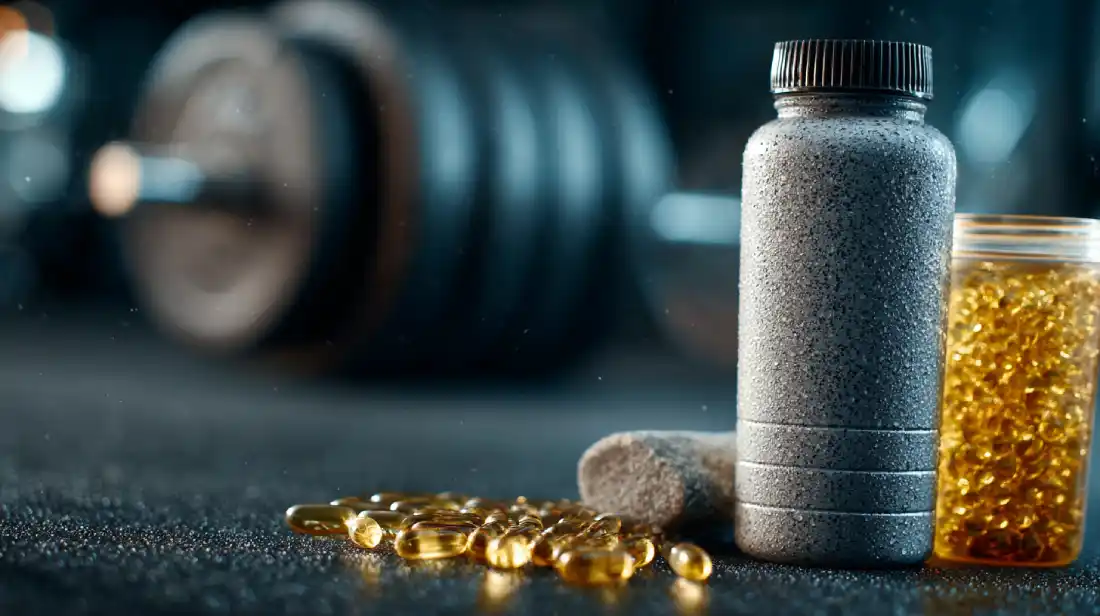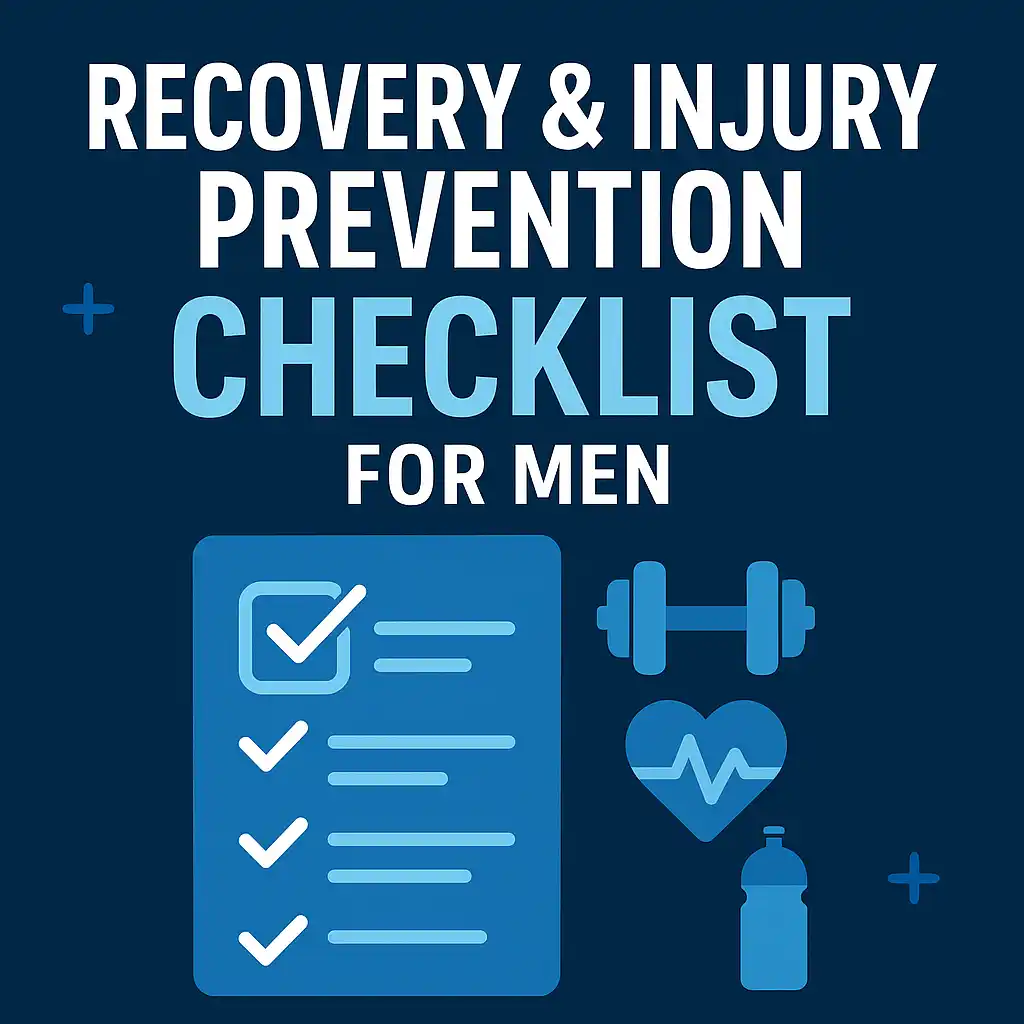Real Strength Is Built When You Rest
If you’re a man who trains hard, pushes limits, and shows up consistently – this guide is for you.
Here’s the truth: Most injuries aren’t dramatic. They don’t come from a single bad lift or a hard fall. They sneak up from tight hips, poor sleep, skipped warmups, and ego lifts you weren’t ready for. And if you’re over 30? The risk skyrockets unless you’ve got a solid plan for recovery and injury prevention.
This guide cuts through the fluff. It’s not about gimmicks – it’s about smart, sustainable strategies that keep you in the fight longer, harder, and smarter.
1. Master the Basics: Recovery Starts Before You’re Sore
Why Sleep Is Your Secret Weapon
Forget the supplements – if your sleep sucks, your recovery suffers. Aim for 7-9 hours. Deep sleep is when growth hormone peaks, tissues repair, and the nervous system resets.
Eat to Recover, Not Just to Train
Muscles don’t grow in the gym – they grow with fuel. Prioritize:
- Protein: 0.7-1g per pound of bodyweight
- Omega-3s: Anti-inflammatory powerhouse
- Collagen + Vitamin C: For tendons and joints
- Hydration: At least 3L daily
Active > Passive Recovery
Swap the “Netflix and limp” routine for:
- Walks or hikes
- Swimming or cycling
- Light mobility work
Recovery and injury prevention for men starts with consistency – not heroics.
2. Don’t Skip the Prep: Injury Prevention Is Masculine Discipline
Train Smart, Not Just Hard
 The fastest way to plateau is by skipping warmups and ego lifting.
The fastest way to plateau is by skipping warmups and ego lifting.
Warm-up routine:
- 5-10 mins light cardio (bike, rower, jump rope)
- Dynamic movements: leg swings, shoulder circles
- 1-2 light sets of your main lift before going heavy
Respect Movement Mechanics
 Most injuries come from poor form, not poor effort. Focus on:
Most injuries come from poor form, not poor effort. Focus on:
- Bracing your core under load
- Perfecting your hip hinge
- Activating lats before pulling
- Stacking joints in pressing movements
“Pain is not a rite of passage. It’s a warning light.”
Mobility + Stability = Longevity
In your 20s, you can get away with bad habits. In your 30s-50s? It’ll cost you.
- Use bands, lacrosse balls, foam rollers
- Prioritize ankles, hips, T-spine, and shoulders
Deload every 4-6 weeks – not because you’re weak, but because you’re strategic.
3. Recovery Tools That Actually Work (and What to Skip)
 You don’t need to break the bank. Just be consistent.
You don’t need to break the bank. Just be consistent.
🧰 Must-Have Tools for Men:
- Foam Roller – Break up tissue tension
- Lacrosse Ball – Dig into traps, glutes, and soles
- Mobility Bands – Activate, stretch, and stabilize
- Sauna – Boost circulation and reduce inflammation
- Cold Showers/Plunges – Accelerate recovery, boost dopamine
🧴 Supplements to Consider:
- Magnesium Glycinate – Helps sleep, muscle relaxation
- Turmeric/Curcumin – Natural anti-inflammatory
- Collagen Peptides – Especially for over-40 lifters
4. The Mental Game of Recovery: Rest with Purpose
 Masculine energy thrives on action – but wisdom comes with knowing when to pull back.
Masculine energy thrives on action – but wisdom comes with knowing when to pull back.
If you feel:
- Irritable
- Weak during regular lifts
- Low libido or motivation
- Constant soreness or insomnia
You’re not a wimp. You’re overtraining.
Recovery isn’t weakness – it’s war-time strategy. Every great warrior knew when to sharpen the blade, not just swing it.
5. Know the Line: When to Push vs. When to Pause
Pain and discomfort are not the same.
🚨 Red Flags:
- Pain that disrupts sleep
- Sharp, stabbing pain under load
- Tingling, numbness, or loss of strength
See a physiotherapist, RMT, or sports chiro when:
- Pain lasts more than a week
- It limits your training
- It affects daily life or sleep
💡 Canadian tip: Most health plans cover these services. Don’t wait until surgery is your only option.
Conclusion: Stay Dangerous, Stay Recovered
The strongest men aren’t the ones who train hardest – they’re the ones who train longest.
Whether you’re 28 or 58, recovery and injury prevention for men is the game-changer that keeps you on the mat, under the bar, and in the fight. Ignore it, and your progress crashes. Respect it, and you’ll outlast everyone.
🔥 Free Resource: Download the Recovery Checklist for Men Over 30
- Warm-up plan
- Weekly mobility schedule
- Rest day ideas
- Tool kit + supplement guide
[👉 DOWNLOAD NOW]





